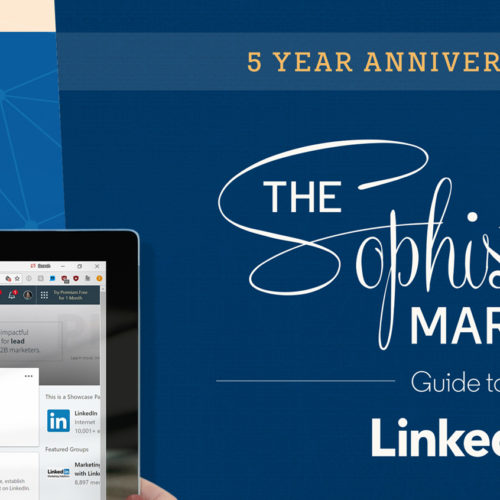The Age-Old Content Debate: Quality vs. Quantity (How Much Do You Truly Need?)
There’s no doubt about it — creating great, shareable, audience-pleasing, profitable content is a skill. Like a five-star chef in a farm-to-table Austin restaurant, the best content creators serve up content so delicious, so crave-able, that their customers (and search engines) keep coming back for more. And yet, there’s an ongoing argument among today’s content marketers on exactly how this happens. Is it the high-quality content that gets the rave reviews or is it serving up mounds of the stuff, fast and quick, that gets results? As always, we’ve dug deep into our resources and curated the answer for you. Let’s start with the age-old debate starter — the quantity of content. I’ll shed some fact-based light on this topic and give you a dose of content quality vs. quantity reality. Hang with me! [bctt tweet=”In this Write Blog, @JuliaEMcCoy explores the ‘age-old’ debate of quality vs. quantity content, and how to correctly think of both and get real results from your #contentmarketing efforts. ” username=”ExpWriters”] What’s Up With ‘Quantity?’: How You Should Be Thinking to Achieve Successful Content in Terms of Regularity and Consistency Okay, so part one of our content success recipe deals with the quantity of content you’re providing. Fact: no one wants to spend time — and money — in a restaurant to get a morsel of food so small you need to slap on your reading glasses just to see it on the plate. The quantity, or rather consistency, of your content truly does apply to the bottom-line success of content. For one, you want your visitors to feel like they’re getting their money’s worth when they stop by your site. Your content isn’t only hot and ready — there’s plenty of it to whet their appetites. For another, Google rewards sites with more content. Hubspot has done studies showing that the quantity of content is most certainly, definitely, beyond-a-doubt tied into your overall success. In this study of over 13,500 B2B bloggers, they found that after 400 published blogs, bloggers earn twice as much traffic. We found that the more blog posts companies published in total, the more inbound traffic they got to their website. You’ll notice the tipping point happened around 400 total blog posts: Companies that had published 401+ blog posts in total got about twice as much traffic as companies that published 301 – 400 blog posts. [bctt tweet=”In a @hubspot study of over 13k bloggers, it was found that after the 400 published blog mark, bloggers start seeing 2x as much traffic. #quantityvsquality” username=”ExpWriters”] And, they found that bloggers that publish more content per month consistently see far more inbound traffic. I can’t stress it enough — if you want to see success from your content, you must have regularity. Successful content is not a shot in the dark. It’s content produced on a consistent schedule, maintained with creativity and evolution over time. So, don’t think of it as quantity – think of it as consistency. Consistent content builds the traffic and the audience that you want to achieve. [bctt tweet=”If you want to see success from your content, you must have regularity. Successful content is not a shot in the dark. It’s content produced on a consistent schedule. @JuliaEMcCoy #contentmarketingtruths” username=”ExpWriters”] At Express Writers, we get 80,000-100,000 unique visitors every month on the basis of our high-quality content alone. Why? Because we’re known for publishing good content consistently. Never once in 8 years have I never published a blog in a week (and that doesn’t mean I’m a content slavedriver, that just means I’m ahead all the time and I’ve got my process down). We publish one main long-form piece on the Write Blog every Tuesday, with custom-made CTAs and graphics. We promote this post to our list in email and with a retargeting campaign on Facebook. We publish regularly to our other blogs such as the monthly #ContentWritingChat recap, video recap, event recaps/lessons learned blogs. We publish 2 videos/month on YouTube with transcripts on the Write Blog. We’ve stockpiled over 1,100 published blogs on the Write Blog to date. Every month, I go back and update 1-3 old Write Blogs out of our 1,000+ with new images, copy, and meta. This has caused many of them to shoot higher in SERPs AND add more conversion value from their rankings One other point — and I can’t stress this enough — is that we never sacrifice quality for quantity, especially now that we’ve grown to 80k+ visitors every month. We can (and must) afford to stop and focus on quality. 3 Ways to Make Sure Your Long-Form Content Is Still Readable Here are some ways to ensure your long-form content leaves your visitors wanting more. 1. Make It Skimmable Long-form content is important for search engine rankings. In fact, content length is directly related to your placement in search results: Source: CoSchedule However, people’s attention spans are about the length of a goldfish’s (8 seconds), so people are becoming more selective in what they choose to pay attention to. To make your content appealing, make sure it has lots of sub-headlines and bullet-pointed lists (like we do in this article) to make it simple for readers to skim through and get straight to the “meat” of the information you’re providing. Add in lead magnets that people can download for more information. 2. Make It Diverse When you walk into your favorite restaurant you can rely on having choices. Readers hitting your website want that same kind of smorgasbord when it comes to content. Variety is indeed the spice of life — and it’s also a critical element in generating lots of content that can cover everything your audience could possibly want to know about your area of expertise. The key is to create tons of content that cover every aspect of a topic, and a great way to do that is to create topic clusters. Answer the Public is a fantastic tool you can use to create solid topic clusters to keep that content flowing. Here’s what came up when I plugged in … Read more









